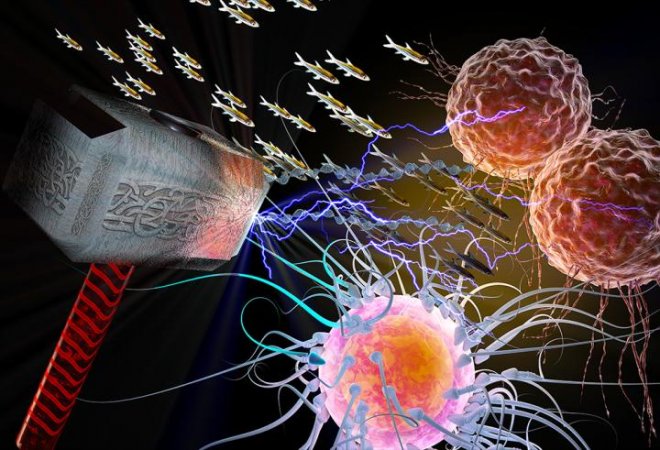
When you hear the name 'THOR' the first thing that comes to your mind is the fictional superhero from Marvel Universe. But do you know that the name not only represents the god of Asgard, who joined Avengers on Earth, but also an ancient gene which could work as a secret weapon to prevent cancer?
Researchers from the University of Michigan Comprehensive Cancer Center have discovered this mysterious gene and named it 'THOR'. According to them, the newly detected novel gene has been found in the human body including mice, and zebrafish. Researchers note that this is rare for this specific type of RNA or Ribonucleic acid, which is a polymeric molecule essential to perform various biological roles. The scientists believe that if this type of RNA could play a role in other animals then it has to be important.
According to Eurekalert, the author of the study Arul Chinnaiyan, who is also an M.D., Ph.D., director of the Michigan Center for Translational Pathology and S.P. Hicks Professor of Pathology at Michigan Medicine said, "Genes that are evolutionarily conserved are likely important for biological processes. The fact that we found THOR to be a highly conserved lncRNA (Long non-coding RNAs) was exciting. We chose to focus on it with the thought that it has been selected by evolution for having important functions."
After the research, Chinnaiyan along with his colleagues have claimed that this particular cell chains play a role in cancer development as well as could prevent the growth of the tumour. Medical researchers published their findings in the journal Cell, where they explained how this unknown genome could work as an attacking weapon to cancer.
Since THOR is highly conserved compared to thousands of potential lncRNAs, researchers were able to study it in human cells and other animals.
"That is one of the challenges of studying lncRNAs that are not conserved. If they're not conserved in model systems, they are difficult to characterize. Here, because THOR is so highly conserved, we were able to look at its expression and function in zebrafish models," Chinnaiyan said.
The research team investigated THOR's capacity to protect humankind from life-threatening disease especially from lung cancer and melanoma. Chinnaiyan said even though they have tested many other lncRNAs, "most of the ones we test don't have a clear function like this."
However, this research was published as a part of basic laboratory findings and thus it can not be used to treat patients. We have to wait for few more studies to understand what miracles can THOR do.









